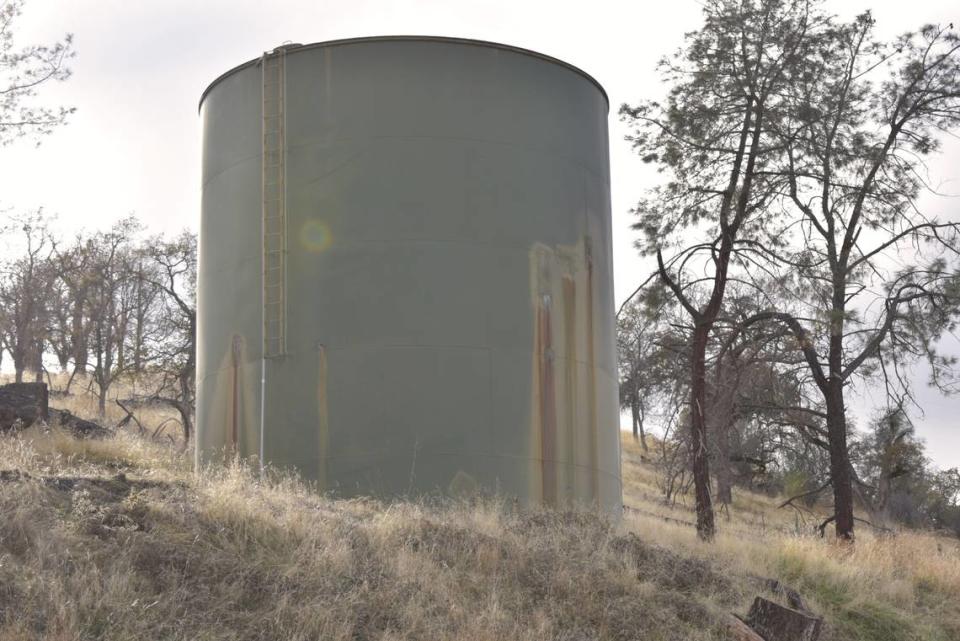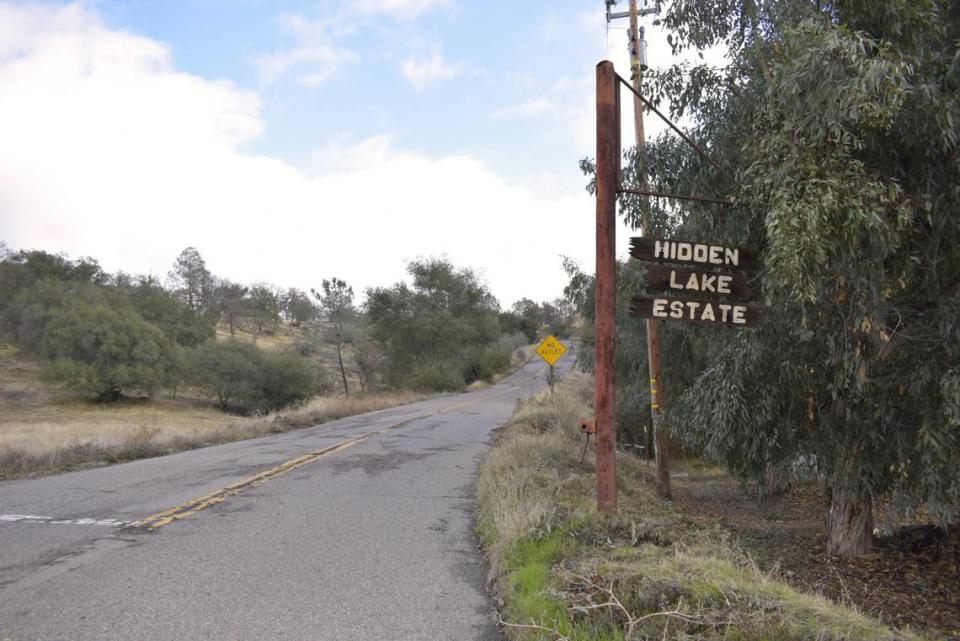California homeowners forced to live with contaminated water. ‘Why are we paying?’
In the early 2000s, Los Angeles County school teacher Bruce Shank drove to just about every lake in California searching for a paradise to build his retirement home.
He thought he had found it at Hidden Lake Estates, a small community on the Madera County side of Millerton Lake. There, he bought a lot for $149,000 in 2004 and started planning for his retirement home. But paradise turned into a nightmare a few years later, when he discovered the area’s drinking water was poisoned.
In 2009, the county placed a building moratorium on the neighborhood, saying the community’s treatment plant was failing to provide enough good-quality water. Shank who had spent another $30,000 on architects and engineering wasn’t allowed to build the home.
Stuck in limbo for more than a decade waiting for a government solution, a frustrated Shank started getting calls in 2022 from real estate investors “offering me pennies” for the lot, he told The Bee. He eventually “just let it go,” he said, and sold for just under $5,000 – a loss of $180,000, he said.
Roughly speaking, about 50 households with 150 people live in Hidden Lake. For more than 15 years, the community’s drinking water has been poisoned because the treatment plant dating to 1986 can’t adequately deal with the excessive amount of organic material in the lake water and ends up producing water with high levels of chemicals known to cause cancer. The chemicals are created during the treatment process when chlorine reacts with the organic material in water drawn from Millerton Lake.
The problem in Hidden Lake has been getting worse the past few years as more organic matter ends up in the lake from the aftermath of certain events, including the increasing number of forest fires in the area.
It could cost up to $12 million to fix the water system, according to one estimate. And because the enclave is so isolated, it’s not close enough to another water system to merge and share costs.
Hidden Lake’s ailing system is just one of an estimated 29 in Madera County and 380 across California left in disrepair, according to a database from the State Water Resources Control Board, because often the fixes are too expensive for communities like Hidden Lake to shoulder.
In 2021, the state estimated it would cost $4.6 billion to fix all of the state’s failing water systems and domestic wells, another water source for many rural communities. The price tag is now looking more like $10.6 billion, according to a draft of next year’s updated estimate.
Some systems like in Hidden Lake need complete overhauls, others high-end maintenance. There’s no one common problem, other than a general the lack of money to fix the troubling water issues.
“We have 380 failing water systems, or 380 solutions,” said Andrew Altevogt, assistant deputy director for the state water board’s Division of Drinking Water.
In Hidden Lake’s case, the malfunctioning plant produces excessive levels of trihalomethanes and haloacetic acids, two classes of chemicals known to cause cancer. Research has linked them to bladder cancer, kidney and liver damage, nervous system damage and birth defects. The Fresno Bee has not found cancer cases in our research linked specifically to water consumption in Hidden Lake.
Many residents, however, live in fear that their health could be impacted down the road. Experts interviewed by The Bee also cautioned against pregnant women drinking the water over any period of time.
“We don’t want our families, our children, our grandchildren or ourselves poisoned,” said Alicia Paris, who moved to Hidden Lake with her husband, Dave Paris, in 2016.
The malfunctioning plant still operates because it’s better than nothing and federal law requires public water systems to treat lake water if it’s going to be used by households. Residents tend to use the water for everyday purposes, such as showering or washing clothes. And some residents have personal filtration systems and choose to drink the water after they’ve treated it on their own. Other residents avoid drinking it and buy bottled water.
To replace the failing treatment plant, the county is seeking upwards of $5 million in state dollars. The county began applying for state money in 2007, but building a new plant will rely almost entirely on state money, so it could take a while.
“Things are not going to be expeditious,” said Jared Carter, the county’s deputy Public Works director.

‘There’s plenty of evidence to be concerned’
Hidden Lake residents receive quarterly notices from the county about their water supply failing to meet state standards. Sometimes, the notices have told them to “boil your water.” Other times, the notices inform them of the high levels of chemical contamination.
Drinking one glass of Hidden Lake water is not a cause for concern, said Sydney Evans, a senior science analyst for the Environmental Working Group based in Washington D.C. But ingesting even very low concentrations over time can affect a person’s health, said Evans, who has conducted research on the cancer risk associated with drinking water disinfection byproducts.. “There’s plenty of evidence to be concerned.”
Evans said health risks are associated even with levels lower than the legal limit. She also said that government regulations determining maximum levels have not kept up with current research.
“Just because it’s not affecting adults as strongly right now, my biggest concern is for pregnant women who are drinking the water,” Evans said.
The Hidden Lake Estates District was created in 1963, but its infrastructure was inherited from the old developers who put it in place, said Philip Toler, the county’s Public Works director. The system pumps raw water from the bottom of Millerton Lake through thousands of feet of pipes into the surface water treatment plant. That’s where the contaminants are formed.
The problem has been getting worse, Toler said, pointing out that the level of organic materials has been higher in Millerton Lake in recent years because of catastrophic events in nature that eventually lead to excessive runoff into the lake and greater amounts of organic material that further overwhelm the water sanitation process.
The catastrophic events include the infamous Creek Fire, one of California’s largest ever, which burned almost 380,000 acres in the mountains of eastern Madera and Fresno counties between September and December 2020. The leftovers of that fire, and other fires since, wash down into the lake as runoff. Last year’s severe winter weather also dumped high levels of organic matter into the lake.
“Millerton Lake has become ground zero,” Toler said.
The treatment of surface water involves the removal of particulates and organics before disinfection with chlorine, but “old treatment plants can’t remove enough of the organics,” said Tricia Wathen, Central California section chief for the state water board’s Division of Drinking Water.
The July notice that Hidden Lake residents received reported that their drinking water contained levels of the two groups of chemicals at issue well above safe rates, nearly twice the maximum amount allowed by law.

Where’s the money?
The replacement treatment plant that Hidden Lake needs is only partially designed. To David Brewer, 71, who moved to Hidden Lake with his girlfriend, Janet Martin, 80, in 2022, that 60% never seems to change.
The county needs more state money to complete the design of the treatment plant and start construction. Hidden Lake’s application is one of 291 total applications seeking more than $1 billion in state help.
When it comes to Hidden Lake’s treatment plant, “there’s no funding that’s secured as of yet,” said Joe Karkoski, deputy director of the state water board’s Division of Financial Assistance.
One of the reasons for this is that the county’s application for funds is not yet complete. Karkoski said his office is continuing to work with the county on the scope and budget for the project.
Brewer and Martin, like several others interviewed by the Bee, say the county is not doing enough to finish the job.
Other residents, such as Debra Schmitt, who has lived in Hidden Lake with her husband, Carl Schmitt, since 1996, hope the neighborhood can forge a more collaborative relationship with the county in order to get the job done.
“We’ve been working on this now for over 14 years, and the progress goes slower because people in Madera County change jobs, and you pretty much have to start all over again,” said Schmitt, referring to turnover in engineers at Madera County’s Public Works Department. “What we want to do is have the community become a consistent knowledge of all the different activities going on and help and collaborate with the government so they don’t have to start over again every time.
The county’s application with the state seeks $5 million for the treatment plant, according to a state funding plan, but Karkoski could not say whether that is the amount the Hidden Lake project would receive when its time comes. Low interest loans are also in the conversations between the state and county.
Wathen, the Central California section chief for the state’s Division of Drinking Water, said consolidation with a nearby system is the first possible solution she looks for when a water system fails. Typically, that’s feasible if the two systems are no more than about three miles apart.
“Millerton Lake is out there alone,” Toler said. “There’s no one to consolidate with.”
The challenge facing Hidden Lake is characteristic of small water districts in counties like Madera.
“It’s really hard because they’re all kind of scattered throughout the county,” Karkoski said. “There’s not a lot of economy of scale when you have 50, 100, 200 connections, especially if you have to do some sort of treatment in order to deliver safe drinking water. It’s just going to be very costly.”

